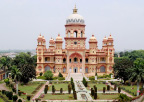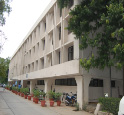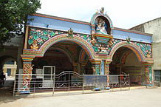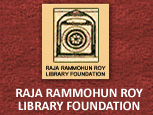- About Us
- Schemes
- Culture Scheme Dashboard
- Scheme of Financial Assistance for Promotion of Art and Culture
- Financial Assistance to Cultural Organizations with National Presence
- Cultural Function and Production Grant(CFPG)
- Financial Assistance for Preservation and Development of Cultural Heriatge of the Himalayas
- Financial Assistance for Development of Buddhist/Tibetan Arts and Culture
- Financial Assistance for Cultural Activities in Performing Arts for Building Grants Including Studio Theatres
- Financial Assistance for Allied Cultural Activities
- Financial Assistance for Promotion of Guru-Shishya Parampara (Repertory grant)
- National Mission on Libraries
- Financial Assistance for Construction of Tagore Cultural Complexes(TCC)
- Scheme of Financial Assistance under Seva Bhoj Yojna
- Scheme of Scholarship and Fellowship for Promotion of Art and Culture
- Museum Grant Scheme
- Scheme for Financial Assistance for Veteran Artists
- Scheme for Promotion of Culture of Science (SPOCS)
- Scheme for Safeguarding the Intangible Cultural Heritage
- Global Engagement Scheme
- Indian Conservation Fellowship Program (ICFP)
- Centenary and Anniversary Celebrations Scheme
- Mission
- ICR
- Commemorations
- CSL
- G20 CWG
- Contact Us
Libraries & Manuscripts
Library service comes under the aegis of State Governments and the States vary in their size, population, literacy rate, production of literature in regional languages and library infrastructure.
THE BEGINNINGHH Sayaji Rao Gaekwad III, Maharaja of Baroda, pioneered the development of Public Library System in India as early as 1910.The Maharaja insisted that “libraries should not limit their benefits to the few English knowing readers, but should see to it that their good work permeates through to the many”, and that “the vernacular libraries should be encouraged” so that every citizen of the State “may enrol himself as a pupil in the peoples’ university-the library. He established a Library Department with Mr. W. A.Borden as the first full time Director of State Libraries. A Central Library at Baroda with a nucleus collection of 88,764 volumes including the Maharaja’s private collection of 20,000 books was established with a full time Curator. The Maharaja also established an Oriental Institute and Library with 6,846 printed books and 1,420 manuscripts in Sanskrit, Gujarati and other languages. He was the first to initiate the publication of Gaekwad’s Oriental Series in 1915.
It is mind-boggling to learn that even a century ago the Maharaja arranged to purchase a Photostat camera and a camera projector by the State. The projector was utilized to view the silent films etc. He started Library Associations from Taluk level, organized ‘Mitra Mandal’ in the town & villages and organized regular library conferences. Mobile library service was organized to cater to the book need at remote villages.
THE DEVELOPMENT and PUBLIC LIBRARY LEGISLATIONIn India, there are 54,856 public libraries starting from English Colony Library at Chennai in 1661. 1972 was declared as International Book Year with the slogan BOOKS FOR ALL.Even before Independence, Kolhapur Princely State, in the Western India passed Public Libraries Act in 1945. 19 States of the Indian Union have successfully passed the library legislation. In the coming few years, there is greater possibility for a library law being enacted in the remaining States.
RELATIONSHIP OF MINISTRY OF CULTURETHE DEPOSIT OF BOOKS, NEWSPAPERS & ELECTRONIC PUBLICATIONS IN LIBRARIES BILL 2013
A new Act “The Deposit of Books, Newspapers and Electronic Publications in Libraries Bill 2013” repealing the old Act is under consideration.
 THE NATIONAL MISSION ON LIBRARIES (NML)
THE NATIONAL MISSION ON LIBRARIES (NML)
The National Mission on Libraries (NML) was launched by the Hon.’ble President of India on 3rd February,2014. NML has a budget allocation of Rs. 400 Crores with the objective of establishing a National Virtual Library of India, establishment of Model Libraries, quantitative/ qualitative survey of Libraries and capacity building. Under the scheme, 6 libraries under the Culture Ministry, 35 Central Libraries in states and 35 District Libraries are to be developed as model libraries , with emphasis on developing these libraries in economically backward districts. Further, 629 district libraries across the states would be provided network connectivity.
COLLABORATION WITH INTERNATIONAL & NATIONAL INSTITUTIONS.On the International scenario, Ministry of Culture has an agreement with more than 100 Libraries in the world for exchange of resources and personnel. The International Book Fair is held every year at New Delhi in the month of February World Book Day (23rd April) is celebrated as Vishva Pustak Diwas in India. The Jaipur Literature Festival, the biggest literary festival in Asia which attracts thousands of writers and visitors from all over the world is held in Jaipur every year in the month of January. One of the unique attractions of this festival is the live performances given by famous musicians. Jaipur Literature Festival has been taking place in Jaipur since the year 2006.
The National Library Week is celebrated from 14th to 21st November every year in India
THE MINISTRY OF CULTURE EXERCISES ADMINISTRATIVE SUPERVISION OVER SIX PUBLIC LIBRARIES.
 The origins of the National Library, Kolkata begins with the establishment of Calcutta Public Library on 21st March 1836. The Imperial Secretariat Library came into existence in 1981 by integrating all Secretariat Libraries.
The origins of the National Library, Kolkata begins with the establishment of Calcutta Public Library on 21st March 1836. The Imperial Secretariat Library came into existence in 1981 by integrating all Secretariat Libraries.
 The Rampur Raza Library at Rampur, an autonomous body under the Ministry of Culture, was founded by Nawab Faizullah Khan in 1774 is a treasure house of Indo Islamic learning and arts ,inherited collection of valuable rare manuscripts, historical documents, Mughal miniature paintings, books and other works of art kept in the Nawabs Toshakhana.
The Rampur Raza Library at Rampur, an autonomous body under the Ministry of Culture, was founded by Nawab Faizullah Khan in 1774 is a treasure house of Indo Islamic learning and arts ,inherited collection of valuable rare manuscripts, historical documents, Mughal miniature paintings, books and other works of art kept in the Nawabs Toshakhana.
 The Khuda Baksh Oriental Public Library, Patna, an autonomous body under the Ministry of Culture,stands a unique repository of about 21000 Oriental manuscripts and 2.5 lakh printed books. Though founded earlier, it was opened for public in October, 1891
The Khuda Baksh Oriental Public Library, Patna, an autonomous body under the Ministry of Culture,stands a unique repository of about 21000 Oriental manuscripts and 2.5 lakh printed books. Though founded earlier, it was opened for public in October, 1891
 Delhi Public Library was started as a UNESCO project in 1951 & was inaugurated by Prime Minister of India Pandit Jawaharlal Nehru. It has developed into a premier Public Library System in the metropolitan city of Delhi. DPL has a network of Zonal Libraries, Branches & Sub-branches, R.C.Libraries, Community Libraries, Deposit Stations, Mobile Library, Braille library, spread all over Delhi. DPL is an autonomous body under the Ministry of Culture.
Delhi Public Library was started as a UNESCO project in 1951 & was inaugurated by Prime Minister of India Pandit Jawaharlal Nehru. It has developed into a premier Public Library System in the metropolitan city of Delhi. DPL has a network of Zonal Libraries, Branches & Sub-branches, R.C.Libraries, Community Libraries, Deposit Stations, Mobile Library, Braille library, spread all over Delhi. DPL is an autonomous body under the Ministry of Culture.
 The Central Secretariat Library under Ministry of Culture is one of the oldest libraries of the Government of India. It dates back to 1891 when the Imperial Secretariat Library was established in Kolkata (Calcutta).In terms of size of collection it is the second largest Central Government library after the National Library, Kolkata.
The Central Secretariat Library under Ministry of Culture is one of the oldest libraries of the Government of India. It dates back to 1891 when the Imperial Secretariat Library was established in Kolkata (Calcutta).In terms of size of collection it is the second largest Central Government library after the National Library, Kolkata.
 Thanjavur Maharaja Serfoji's Sarasvati Mahal Library, Thanjavur is a priceless repository of culture and a time defying treasure house of knowledge, built by the Nayaks and the Marathas of Thanjavur. The Library houses a rich and rare collection of manuscripts on art, culture and literature. Conceived and christened as the Royal Palace Library by the Nayak Kings of Thanjavur and the Maratha rulers nourished it for intellectual enrichment.
Thanjavur Maharaja Serfoji's Sarasvati Mahal Library, Thanjavur is a priceless repository of culture and a time defying treasure house of knowledge, built by the Nayaks and the Marathas of Thanjavur. The Library houses a rich and rare collection of manuscripts on art, culture and literature. Conceived and christened as the Royal Palace Library by the Nayak Kings of Thanjavur and the Maratha rulers nourished it for intellectual enrichment.
 Raja Rammohun Roy Library Foundation (RRRLF) established in May, 1972is an autonomous body under the Ministry of Culture. The RRRLF is vested with the responsibility of promoting library movement in the country. The RRRLF works in close association and active cooperation with different State Govts. and Union Territory Administrations through a machinery called State Library Planning Committee (SLPC/SLC) set up in each state at the instance of the Foundation. Besides it being a funding body, the RRRLF also functions as a national agency for coordinating, monitoring and developing public library service in the country.
Raja Rammohun Roy Library Foundation (RRRLF) established in May, 1972is an autonomous body under the Ministry of Culture. The RRRLF is vested with the responsibility of promoting library movement in the country. The RRRLF works in close association and active cooperation with different State Govts. and Union Territory Administrations through a machinery called State Library Planning Committee (SLPC/SLC) set up in each state at the instance of the Foundation. Besides it being a funding body, the RRRLF also functions as a national agency for coordinating, monitoring and developing public library service in the country.








